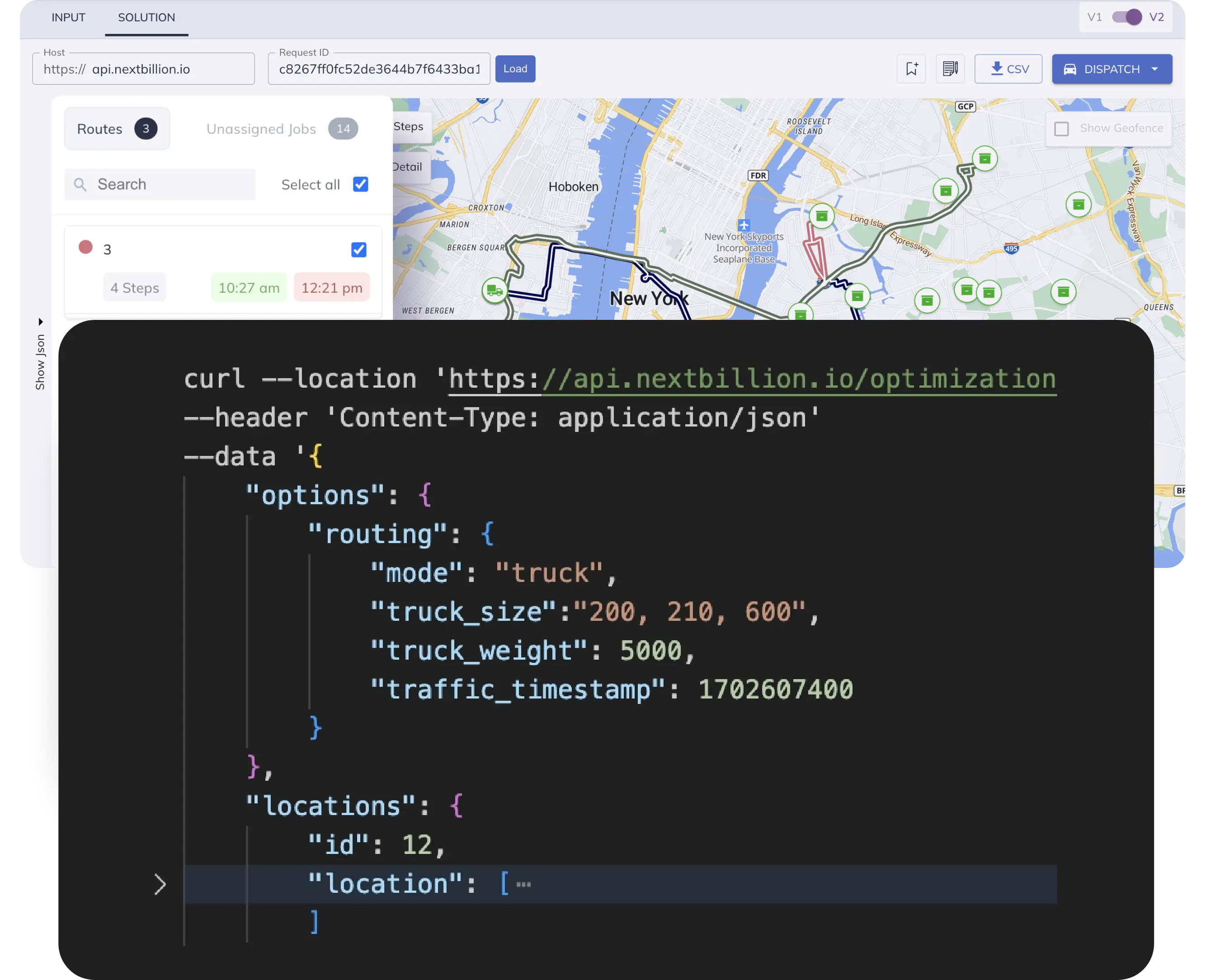An app or website exists for everything you could possibly want. Online shopping for all your retail purchases. On-demand and subscription services for everything from food, grocery and laundry to car maintenance, home repairs and even homes themselves. Life today truly is digital.
There is, however, a very tangible, critical common thread that makes all of the above possible: last-mile delivery. The industry was already quickly building momentum in the years leading up to 2020, but the COVID-19 pandemic proved to be the catalyst that turned it into what it is today.
The global last-mile delivery market was valued at $40.5 billion in 2021 and is anticipated to grow to $123.7 billion in 2030 at a CAGR of 13.21%. With so much at stake, it’s no surprise that companies operating in the space face stiff competition and are looking to maximize value and efficiency wherever possible. This is where route optimization can make the difference.
Here’s how a route optimization API can help with last-mile optimization:
1. Minimizing costs
Advanced route optimization algorithms can calculate the optimal path for any given delivery assignment based on a variety of factors, such as the size, weight and type of the delivery vehicle; type of terrain; weather conditions at the time of delivery and priority of stops. All of this can help ensure that the delivery vehicle takes the most efficient routes.
This last-mile route optimization translates to significant savings on fuel costs, fewer hours worked for the drivers — and as a consequence, lower labor costs — as well as reduction of wear and tear on fleet vehicles, thereby lowering maintenance costs. With its multi-pronged approach to cutting expenses, route optimization is a great way to elevate the ROI of a last-mile delivery operation.
2. Maximizing operational efficiency
Some routing optimization APIs have vehicle-specific routing capabilities to ensure last-mile optimization for any type of fleet; after all, e-scooters, motorbikes, cars, vans and trucks all navigate roads differently. By providing drivers with the most efficient routes for their vehicle types and assigned stops, last-mile delivery companies can reduce the number of miles driven and the amount of time spent on each delivery. This, in turn, enables them to complete more deliveries per hour.
Through realizing such significant efficiency gains, a routing optimization API makes it possible for delivery companies to stretch service coverage areas without the need to expand their existing fleet of vehicles and drivers. This also makes scaling operations a more feasible proposition when they do want to expand their fleets.
The net result of all of the above is strengthened unit economics, and therefore, more profitability.
3. Avoiding disruptions
Any route optimization API worth using will have the ability to take into account factors like live and historical traffic and weather data, time of day, regional road rules, road closures and diversions, etc. With continuous access to such data, a route optimization API can help last-mile delivery companies always stay on top of what’s happening on the roads.
Delivery companies will, on occasion, need to add unplanned stops to or remove existing stops from already optimized delivery sequences. Obviously, this can be detrimental to operational efficiency if mishandled. Though not a common feature, there are some route optimization APIs that allow for the effective ordering and reordering of stops mid-route to accommodate these needs.
With these features combined in a route optimization tool, delivery companies can easily work around any unforeseen delays or disruptions that might otherwise affect their operations — from last-minute stop-location changes and traffic jams due to road accidents, to inclement weather and road closures for maintenance work, local festivals and dignitary visits.
4. Improving CSAT
What’s the best way for a delivery company to improve customer satisfaction? Getting the customers’ packages into their hands as quickly (and safely) as possible, of course! By finding the fastest routes to destinations and reducing delivery times through route optimization, companies can ensure that their delivery promises are kept, and that customers remain happy and coming back for more.
In today’s hyper-competitive delivery market, every minute counts. One need look no further than the sudden rise of 10- and 15-minute delivery offerings from companies in an effort to set themselves apart and win customers’ hearts — and the market share that goes with that. Providing fast and reliable delivery is essential for retaining customers and building a strong reputation, and last-mile optimization goes a long way in making that happen.
Standalone route optimization API vs. full-fledged solution
That all sounds great, but why specifically talk about route optimization APIs and not full-fledged route optimization solutions, you might be wondering. Well, there’s good reason for that.
A full route optimization solution would include a whole proprietary ecosystem of smaller tools and services, which often doesn’t play nice with other solutions. Because of this, packaged solutions can have a disruptive impact on an organization’s existing tech stack, driving unnecessary expense, effort and time spent.
A standalone route optimization API, on the other hand, offers more flexibility than a packaged solution can. Engineered to operate as a single cog in an elaborate machine, these tools can easily and effectively communicate with other solution components. The result — a performant but cost-effective route optimization solution that doesn’t necessitate a change in infrastructure.
With last-mile delivery set to continue growing for the foreseeable future, the space is only going to get more crowded and competitive. To succeed in such circumstances, companies will need to do at least three things: differentiate themselves from their competitors, operate as efficiently as possible and maximize profit margins. A high-performance, feature-rich route optimization API — like NextBillion.ai’s — can help with all of that.






